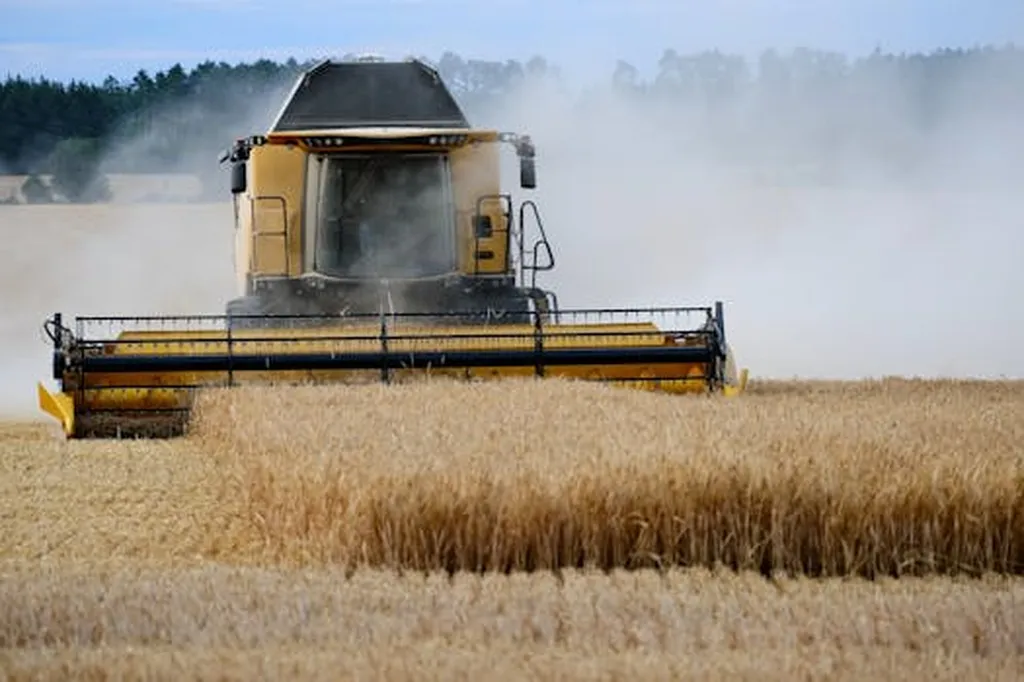In the heart of China’s agricultural landscape, a groundbreaking study led by Donglin Wang from the College of Water Conservancy at North China University of Water Resources and Electric Power is revolutionizing how we approach wheat farming. Wang and his team have developed an innovative method for wheat spike recognition and counting using unmanned aerial vehicles (UAVs) and an improved Faster Region-based Convolutional Neural Network (Faster R-CNN) architecture. This technology promises to transform precision agriculture and yield prediction, offering significant commercial impacts for the energy sector.
The study, published in the journal *Plants* (translated from the Chinese title *植物*), addresses the long-standing challenge of manual wheat spike counting, which is not only time-consuming but also prone to inaccuracies. By leveraging high-resolution images captured by a DJI M300 RTK equipped with multispectral sensors, the team collected a comprehensive dataset covering key growth stages of winter wheat under various fertilization and irrigation treatments. This dataset, encompassing diverse field scenarios, ensures the method’s representativeness and generalizability.
One of the standout features of this research is the improvement made to the Faster R-CNN model. By replacing the conventional VGG16 backbone with ResNet-50, incorporating residual connections and channel attention mechanisms, the team achieved a remarkable 92.1% mean average precision (mAP). This improvement also led to a significant reduction in model parameters, from 135 M to 77 M, a 43% decrease. As Wang explains, “The enhanced model not only improves accuracy but also reduces computational complexity, making it more efficient and practical for real-world applications.”
The performance of this improved model was rigorously tested, demonstrating a 15% reduction in missed detection rate compared to YOLOv8 in dense canopies. The spike count regression analysis yielded an impressive R² value of 0.88 (p < 0.05) against manual measurements, with yield prediction errors below 10% for optimal treatments. The robustness of the model was further validated through a dedicated 500-image test set, maintaining over 85% accuracy even under challenging conditions like cloudy weather.The implications of this research extend beyond agriculture. In the energy sector, where biomass is a critical resource, accurate yield prediction can optimize resource allocation and improve efficiency. As Wang notes, "Our method provides a reliable tool for predicting wheat yield, which can be integrated into broader agricultural and energy management systems."By integrating spike recognition with agronomic parameters, the team developed a comprehensive yield estimation model achieving 93.5% accuracy under optimal water–fertilizer management. This systematic approach addresses key technical challenges in automated spike detection, offering significant practical value for smart agriculture development.As we look to the future, this research paves the way for more advanced and efficient agricultural practices. The integration of UAV-based phenotyping and AI-driven analytics holds the potential to revolutionize how we manage crops, optimize resources, and predict yields. For the energy sector, this means a more reliable and sustainable supply of biomass, contributing to a greener and more efficient energy landscape.In the words of Donglin Wang, "This work is just the beginning. The possibilities for applying these technologies in agriculture and beyond are vast, and we are excited to see how they will shape the future of smart agriculture and sustainable energy."

